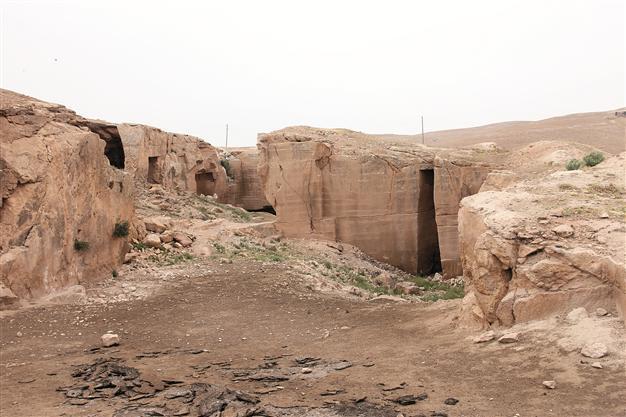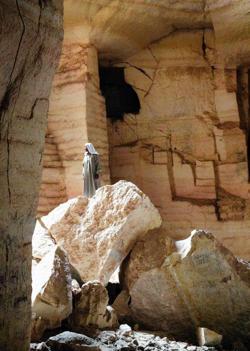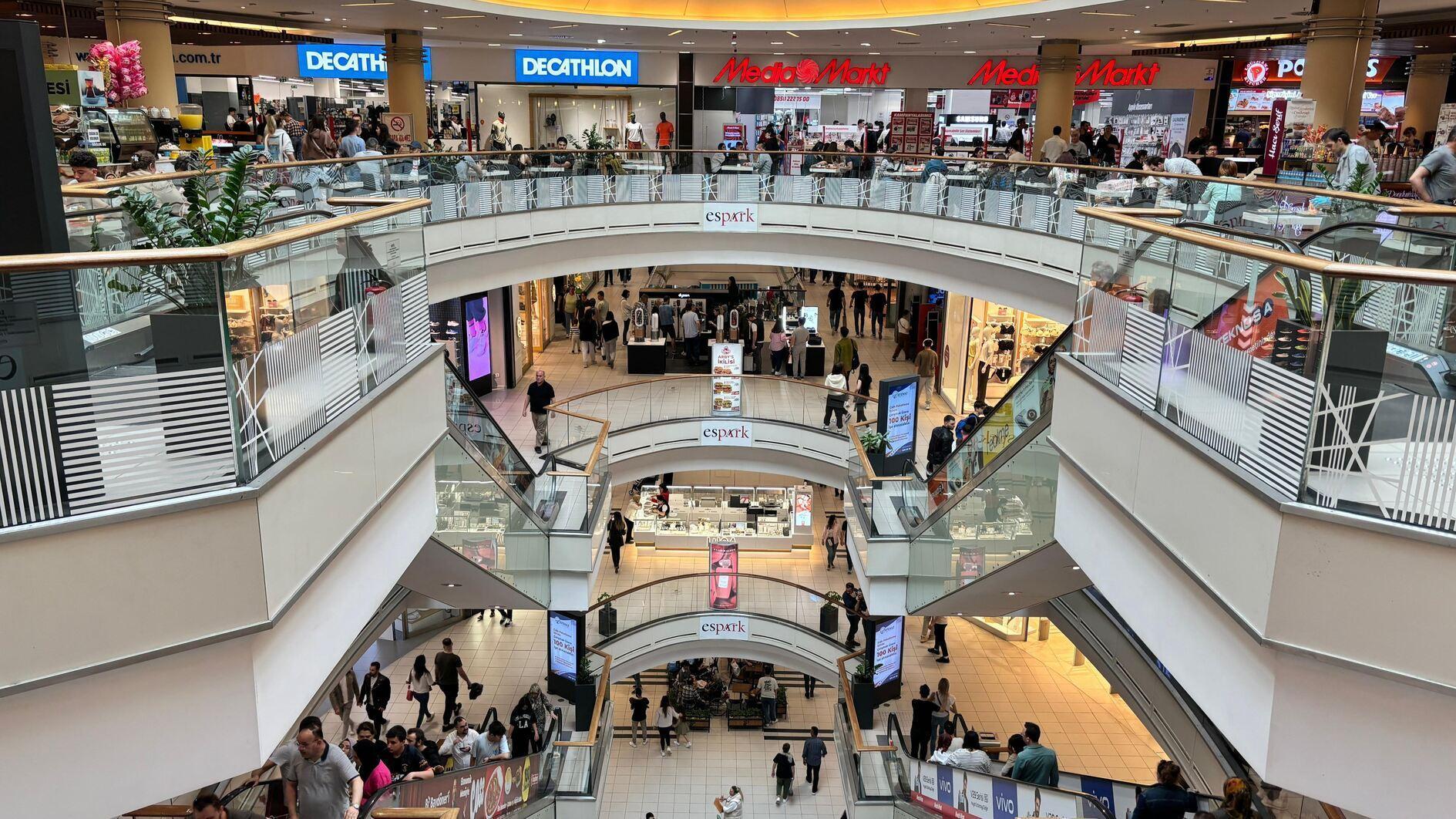Bazda caves near Harran
Wilco van Herpen

In Bazda caves one can see where the stones of a once very powerful and important city, Harran, came from. Thousands of stones were carved out of the rocks from this village and used to create Harran. Photos by Wilco van Herpen
Visiting Harran was an unforgettable experience, but it became even more impressive after visiting the Bazda caves. About a half-hour drive away from Harran you will find the Bazda caves. The road is narrow and full of potholes. At the moment there is road construction going on. Suddenly, when you think the road is “good” again, you have to step on the brakes because the road as it is comes to an end. A temporary road, directly next to the normal road, has been constructed, but it is actually nothing more than dry sand and boulders that create something that should resemble a road. Especially when traffic is approaching I advise you to close your windows, because if you do not do this you will have to swallow heaps of dust. Wherever you look you see nothing more than a dry, vast landscape that only turns green during springtime. Suddenly a small sign points out the Bazda caves and a narrow road leads you to the village.What you see when you get out of the car is not impressive at all, a couple of very basic houses and of course some children directly approaching you to guide you to the cave. Walking toward the cave I felt like turning around and running back to my car. Escape from this place, this is going to be a bummer. My photographer friend Tahsin Aydoğan, who wanted to show me Şanlıurfa and its surroundings, got more and more enthusiastic until he reached the entrance that leads to the cave. Suddenly he got quiet. “Last time I was here this was just an ordinary entrance,” he complained. I looked in the direction he was pointing and saw concrete steps going down to a small hole in the hill. It definitely did not look spectacular; on the contrary, this was horrible. My expectations got lower and lower. Because of the earlier excitement of my friend Tahsin, I continued, but to tell you the truth, his latest reaction did not comfort me.
Making barbeque in the cave
So I worked my way down the concrete steps and went through the hole in the hill. What I saw struck me with surprise. A couple of guys were walking around with meat, bread and water. Another man was waving with a piece of cardboard to make the barbeque fire stronger, and all of this happened at the edge of an amazing cave. This was not just an ordinary cave; this was a mind-blowing cave. You might wonder why. Well, this cave was not a natural cave. All the walls were straight; almost cubistic. This was definitely something different from what I expected. That morning when we had breakfast together, Aydoğan was talking about a visit to some interesting caves. But I never expected something like this. This was manmade, not natural but at the same time so beautiful.
In Turkey we see, or can see, a lot of old historical cities. And often I wondered where all those stones came from. Here, at the Bazda caves, it was the first time that I got an answer for my stories although the answer was a locally oriented one. Here you can see where the stones of a once very powerful and important city, Harran, came from. Archaeologists have found writing on the walls dating back to the 13th century that say the stones that they carved out of these caves were used to create buildings in Harran. Thousands of stones were carved out of the rocks from this village and used to “create” the once-important city of Harran. Hundreds of slaves were working around the clock creating a city that would be of global importance; at least at that time. History is very interesting because centuries later nobody would remember or know the name Harran although famous scientists have studied and researched here.
 ‘Real Turk’
‘Real Turk’So I entered this cave (by the way, in this area there are a number of this kind of cave, and every one is spectacular) and looked around. I could not believe people would be able to make something like this. It was overwhelming, mind-blowing. We entered the cave and Tahsin recognized a man whose picture he had taken years ago. He was the muhtar of the village and took care of the caves. Tahsin did something I never did or do as a photographer: asking the man to pose on one of those rocks. It was a beautiful picture, and while Tahsin was directing all the poses, I just took some pictures of it as well. Those people gave depth to the picture, and because of them I was able to show the immense size of the cave.
Those Arab-Turkish people are different from the Turkish people you might know. Still, after living in this country for over 15 years, every day I am surprised about the “real” Turk. According to me there is not something like a “real Turk,” because during all those years of Ottoman rule in the Ottoman Empire so much ethnic exchange has taken place. I know the Kurdish Turks but Arab Turks? My feeling was that they were proud to be such a minority. This was something new to me, and especially during this time with the problems in Syria it must be a difficult time for them. Most of the people here have relatives or friends in Syria, and to see the country sliding down into an irresolvable civil war must be horrible for them.
For me these caves were an unforgettable experience. Traveling around in Turkey I have seen a lot of old historical places, but I never saw a stone quarry like this one. It must have been a well-organized quarry because they even made roads and tunnels that were easy accessible for donkeys or horses with a cart. I hope that more people become aware of the importance of this place and will protect it, because for me the Bazda caves became one of my favorite historical places in Turkey.
















